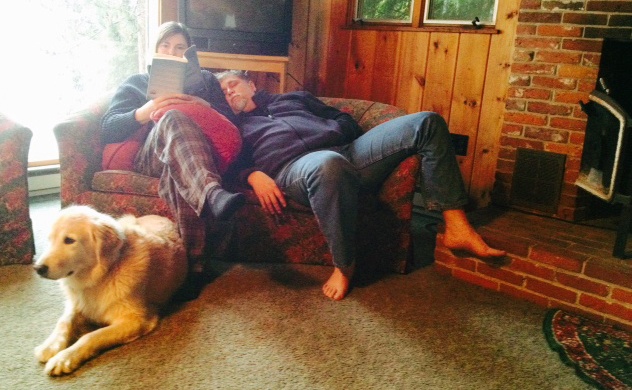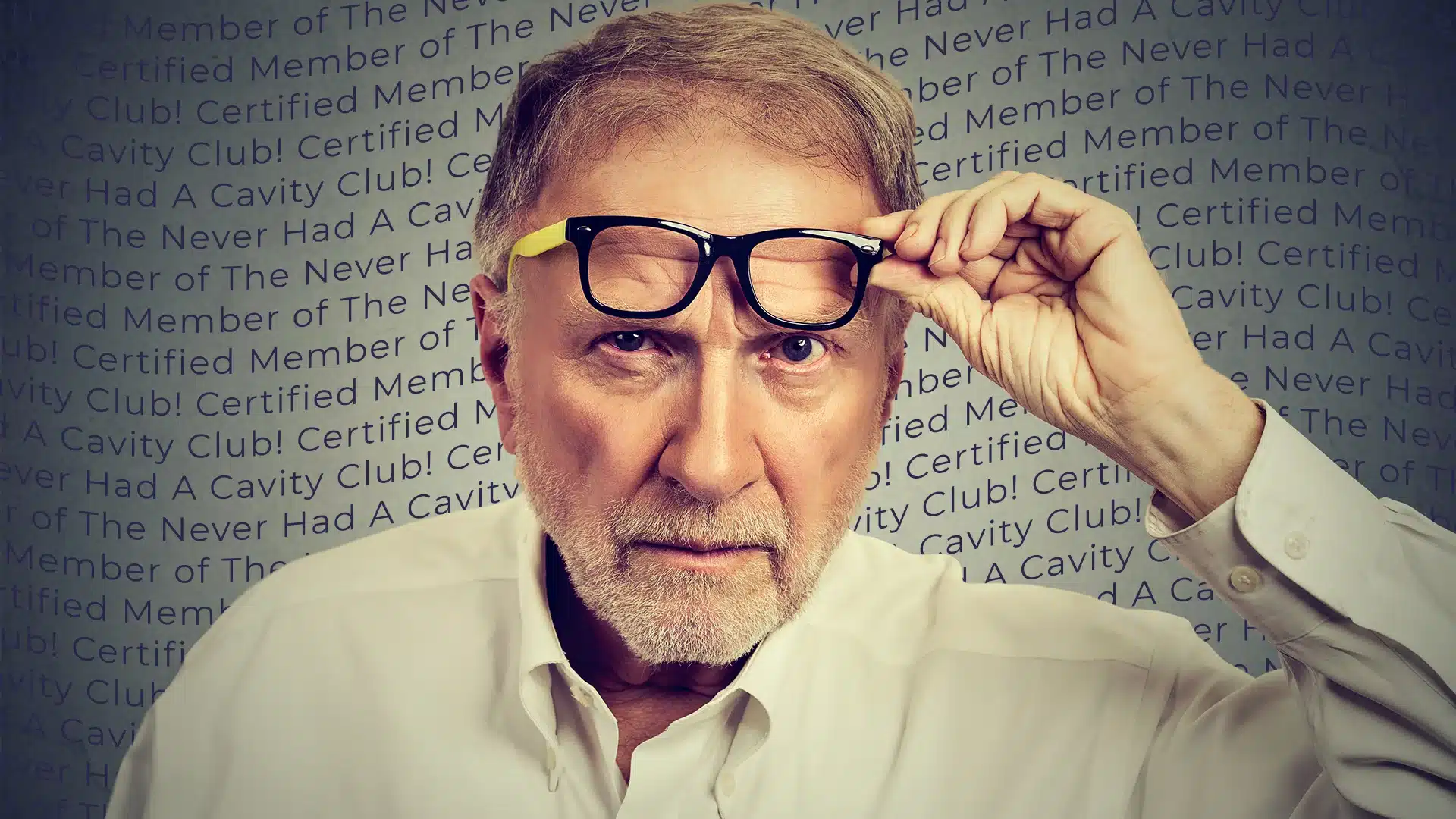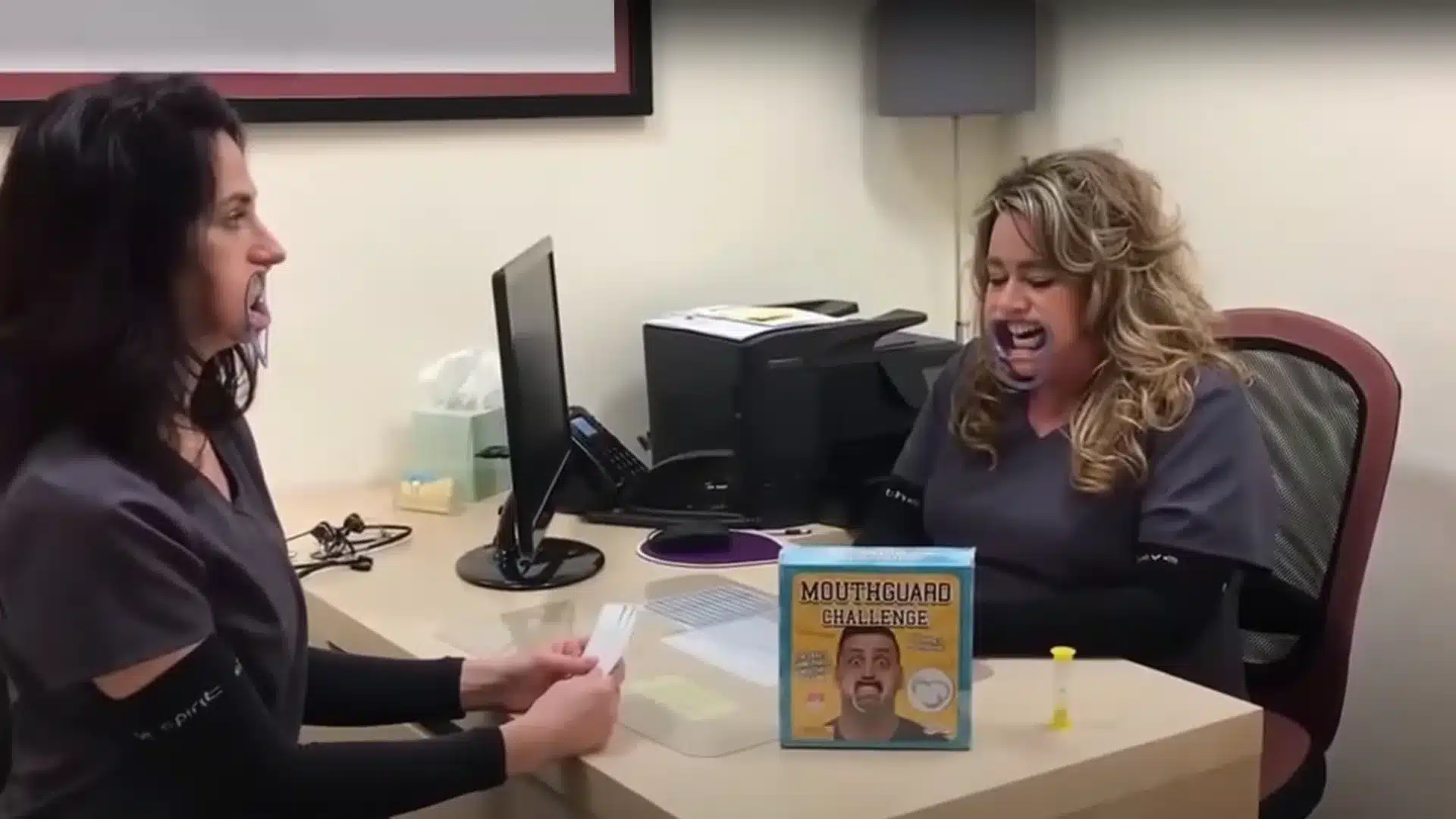We all know that one person who says, “I haven’t eaten at McDonald’s in about 15 years” or “I don’t watch TV at all. Ever.” Obviously, they’re just massaging the truth, because Five Guys Burgers still counts as fast food, and streaming old episodes of ‘American Idol’ on a laptop technically counts as TV watching.
Today, a larger number of adults still have their natural teeth than in past decades, likely due to better nutrition, fluoridated water, and easier access to good dental care. However, I often hear just a smidge of righteous indignation when I show something brewing on an x-ray to a patient who has been, so far, a lifelong member of the “Never Had a Cavity Club.”
Members of that club tend to be individuals in their late 30’s or early 40’s, many of whom received consistent dental care as kids. They’re quite insistent that since they’ve never needed a filling before that I must be the mad one. They feel invincible in the dental chair – as if they’re ‘immune’ to cavities. Unfortunately, cavity development is not impervious to the one thing that many of us are in denial about; aging.
Crunch on These Numbers

According to the National Institute of Dental and Craniofacial Research’s Dental Caries in Permanent (Adult) Teeth stats, most Americans don’t make it to adulthood without at least a few cavities, and more than 90% of adults over the age of 40 have had some form of decay in their permanent teeth. Approximately 5% of adults, aged 20 to 64 have no teeth, and 92% of adults in this age group have had cavities in their permanent teeth.
Between the ages of 16 and 21, you are more likely to develop cavities in the crowns of your teeth. Obviously, life changes during these years often lead to changes in eating habits. Think about when you left home and went off to college and suddenly ramen noodles became their own food group. Unfortunately, carbohydrates are going to be higher in cavity producing sugar and starch than your mother’s boiled-to-oblivion broccoli. The good news is, if you haven’t already had one, the risk of cavities in the crowns of your teeth declines.
“Wait, I Went From Having 1 Cavity to Now Having 5?!”
Yes, that would sound a bit fishy to me, too. However, think of your mouth like an apartment building; if there are bed bugs in one unit, it’s pretty likely they will spread. If you’ve had cavities recently, your mouth still contains the bacteria that caused them. Ergo, the more cavities you’ve had, the more likely you are to get them in the future. If you have had teeth extracted because they were decayed, your mouth still contains a very high level of bacteria. Often, opposing teeth from an extraction will start to develop cavities, because when you chew, they have nothing to ‘chew off’ from, so food collects in the crowns.
As we age, we enter a second round of cavity prone years. Saliva is a great natural defense against cavities, simply by virtue of flowing and ‘washing’ over your teeth. However, it cannot flow around teeth that are close to a removable partial denture. New cavities may start to develop in them, particularly if the denture is kept in place for many hours during the day, and overnight for those individuals who (against recommendation) sleep in their denture. Some people also believe that because dentures aren’t “real teeth”, they can skip cleaning them. However, dentures are still exposed to, and harbor, whatever tootsie roll or Frappuccino you decide to indulge in mid-afternoon.
Xerostomia (dry mouth) can become an issue, particularly for individuals who may be taking medications for allergies, high blood pressure, high cholesterol, pain, anxiety, depression, Parkinson’s or Alzheimer’s disease. Unfortunately, dry mouth is a side-effect in over 500 medications.
Receding gums are another promoter behind adult cavities. This can be related to gum disease, or overly aggressive tooth brushing habits. This damages gum tissue, which becomes swollen, exposing the roots of your teeth (which are not covered in a protective suit of armor aka ‘enamel’) and become very sensitive. Exposed root surfaces are then more susceptible to plaque build up.
More Good News…
Existing fillings can also contribute to more cavities. Like anything, a filling will weaken over time, and it can fracture, where the seal between the filling material and the tooth loosens. Bacteria can collect in the cracks, causing acid to build up, which then starts the decay process.
These days, we are being told to ‘graze all day’ to keep the metabolism stoked for optimum weight loss. The problem is, the more often you eat, the more food you provide for bacteria. So while you might be able to go out and buy a whole new wardrobe, two sizes smaller, chances are you will need to leave a little left over for dental co-pays.
Denial-Anger-Bargaining-Depression-Acceptance (D-A-B-D-A)
According to the experts, there are five stages that individuals pass through when experiencing a loss. Grieving the loss of your “cavity free” status follows this same pattern. Except I would recommend an addendum to this; S-A-P (Schedule An Appointment – ASAP!).




